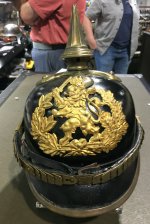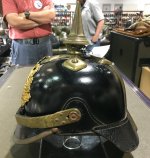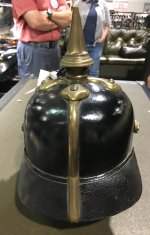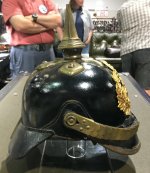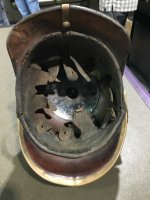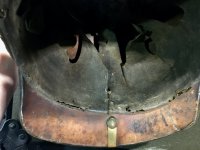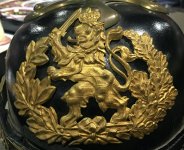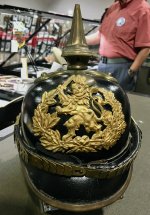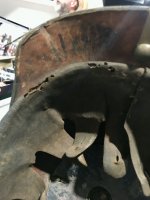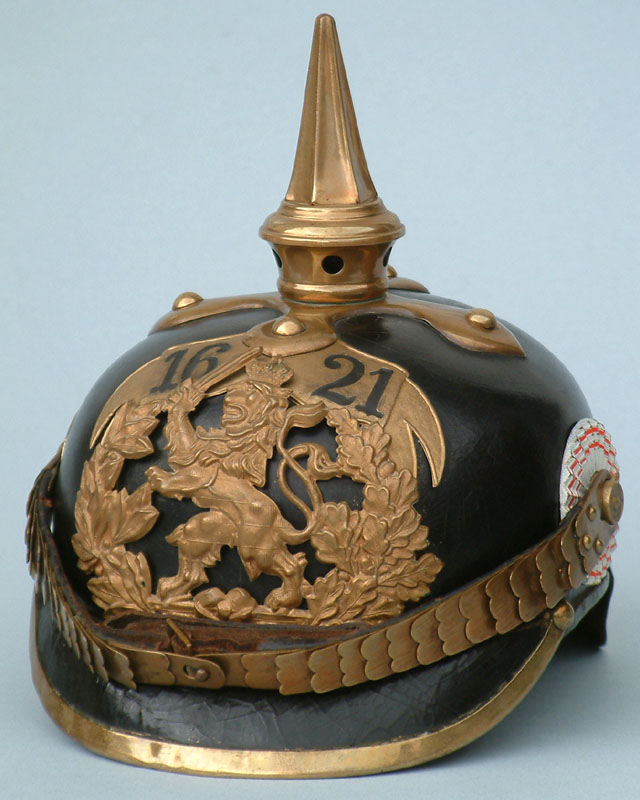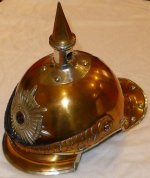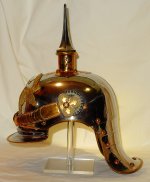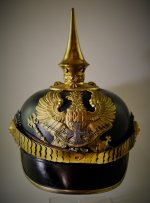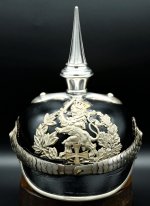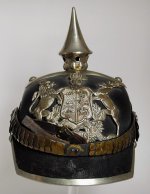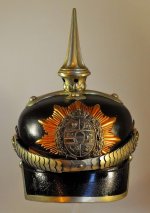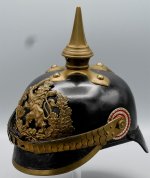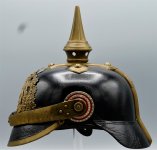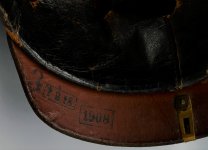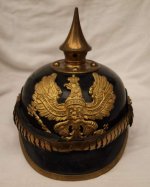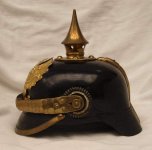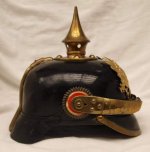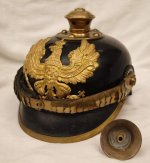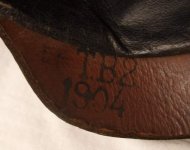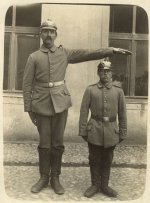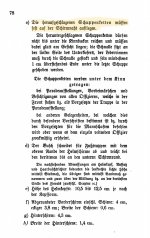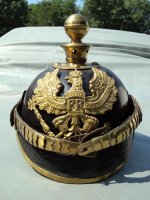Interesting discussion with a great deal of valuable information. In my experience doing restorations, which often involves officer helmets with scales, I count scales plus end fittings. So for example, I am presently working on a very valuable artillery officer helmet where one scale is a 13+fitting and the other is a 16+, so obviously, something doesn’t add up. This discrepancy was not obvious when you just look at the helmet and it’s rare wappen. The 13 was an add on. Thus, my contribution to the discussion is.....also count the scales. I will state the obvious...the larger the helmet/head, more scales have to be added to meet position regulations. At the same time, the thin leather straps with buckle allows for different lengths of faces. Last, do not ignore the chin scale rosettes which fasten the scales to the shell, they also should match. Again, using my example above, not only did the scales not match, the rosettes were also different. These often ignored helmet fittings have dozens of subtle variations involving size, shape, designs, curvature etc. For example, a member recently needed one to complete his helmet which had come with only one scale and rosette I had 6 singles to try and match, James had 15+ and we still couldn’t get an exact replacement. We had to go for a piece which was almost the same as the original.
